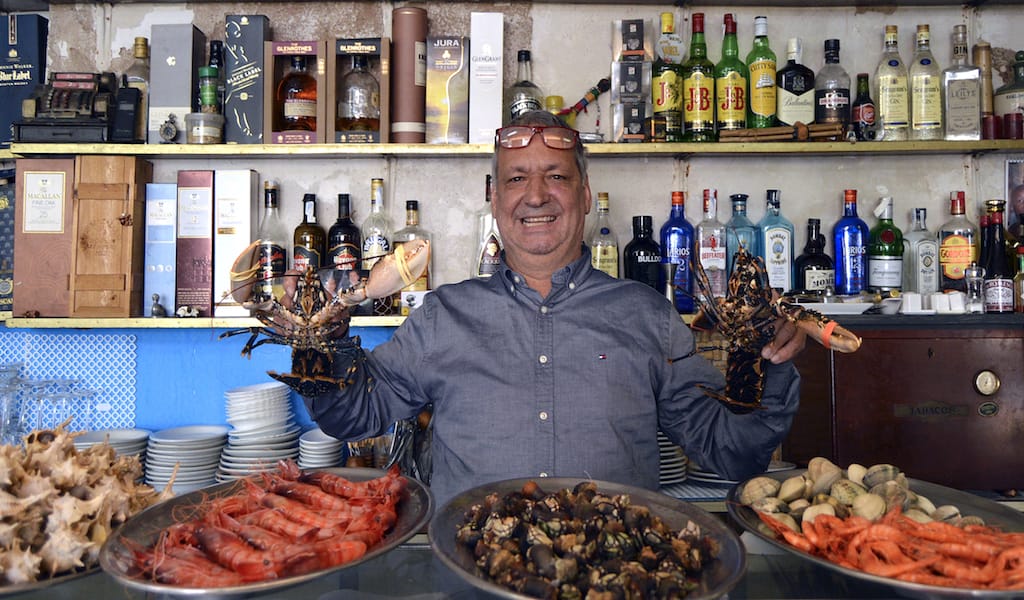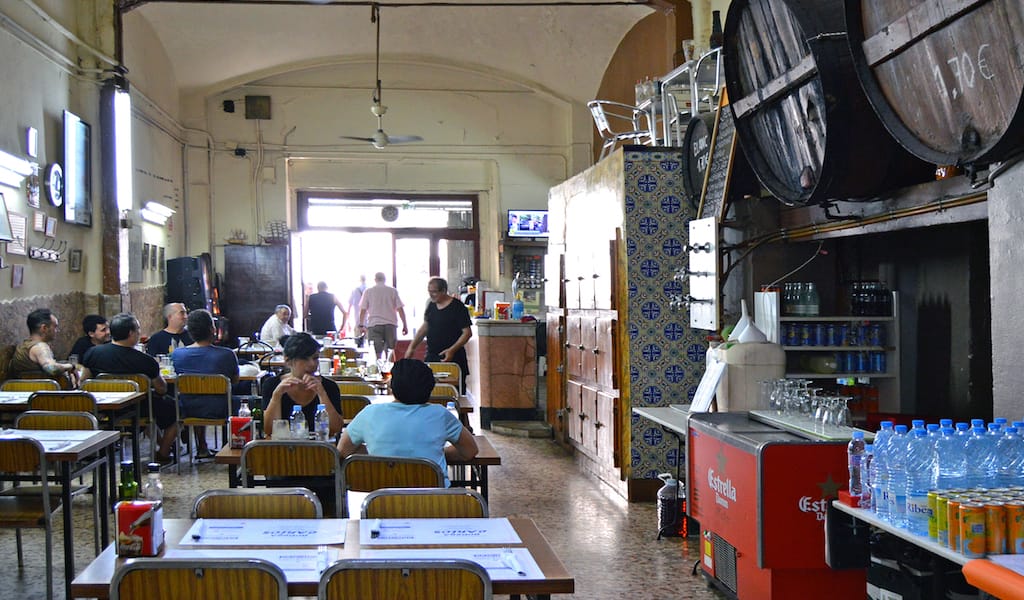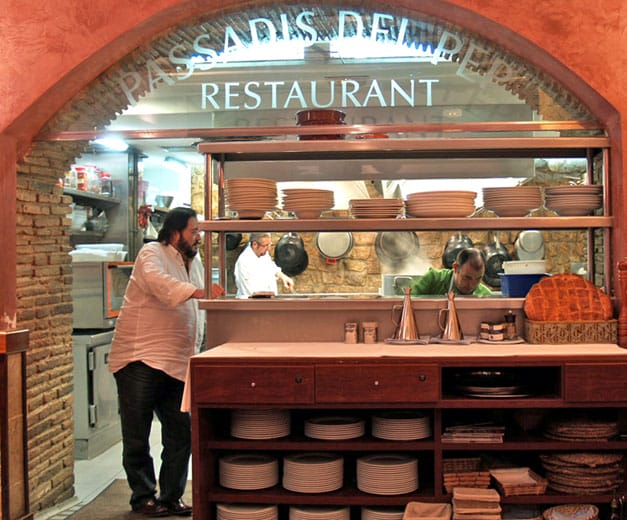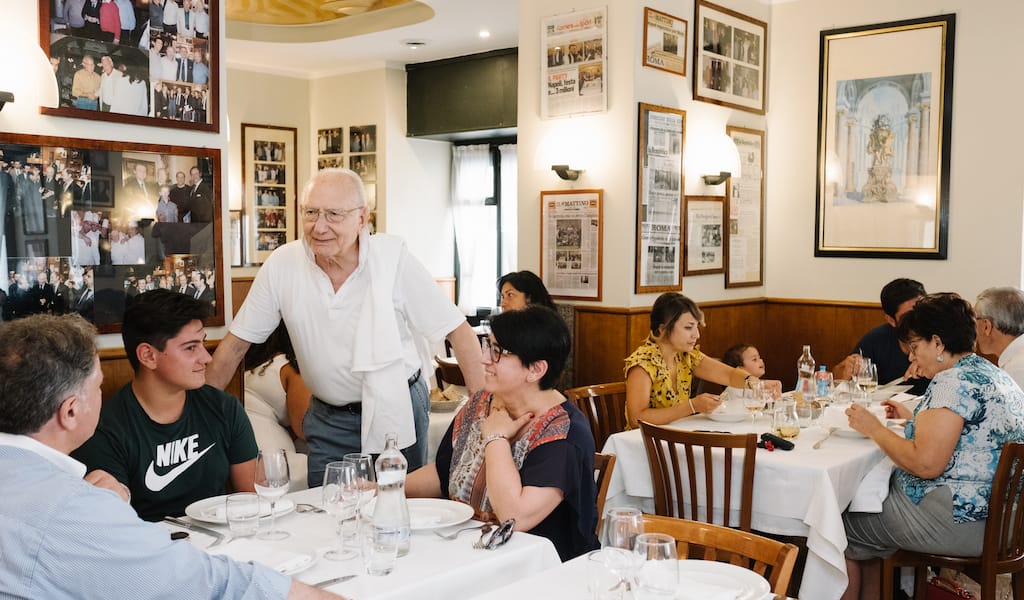Despite the big wooden casks on the wall and the creaky shelves crowded with bottles behind the bar, wine is no longer king at Cal Siscu, an old bodega (wine store and tavern) in Hospitalet de Llobregat, a city located on the periphery of the Barcelona metropolitan area. The new ruler, who has deigned to keep these old relics from an earlier era, is seafood – every day the bar’s counter is covered with trays of majestic treasures from the Mediterranean and the Atlantic like prawns, clams, barnacles and sea snails.
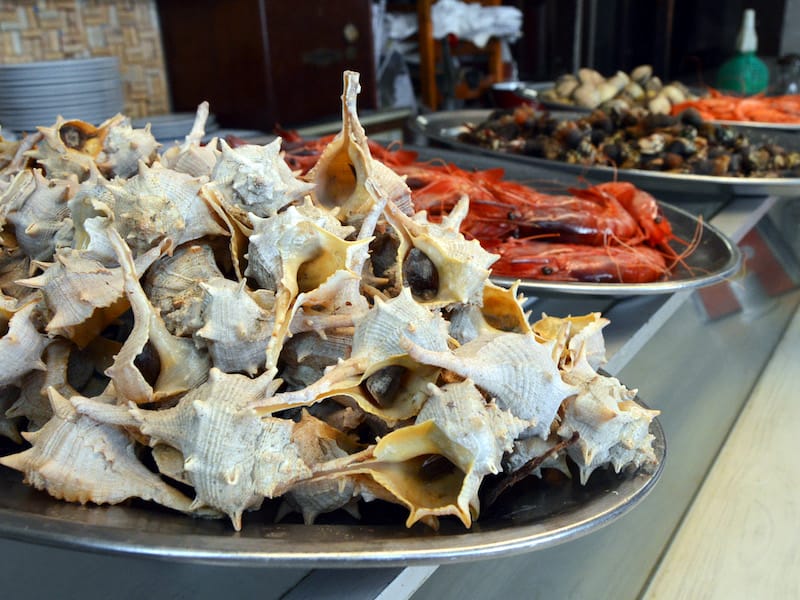
Founded by Francisco “Siscu” Rosés in 1933, Cal Siscu originally sold bulk wine and liquors. At that time, the only seafood served came from a can. Customers frequented the tavern, which also doubled as a home (Siscu and his family used to live upstairs), to fill up their wine jugs and sip on a vermut with some olives and conservas like tuna or sardines.
When Siscu’s son Antonio “Toni” Rosés (who was born in the bodega) and his wife, Dolors, took over the business, they knew that some changes needed to be made if they wanted to survive. So Dolors began to cook fresh seafood in the family’s kitchen. In time, the wine tavern morphed into a marisquería, a proper seafood restaurant, offering fresh oysters and their iconic dish, lobster in an aromatic tomato sauce thickened with almonds and hazelnuts.
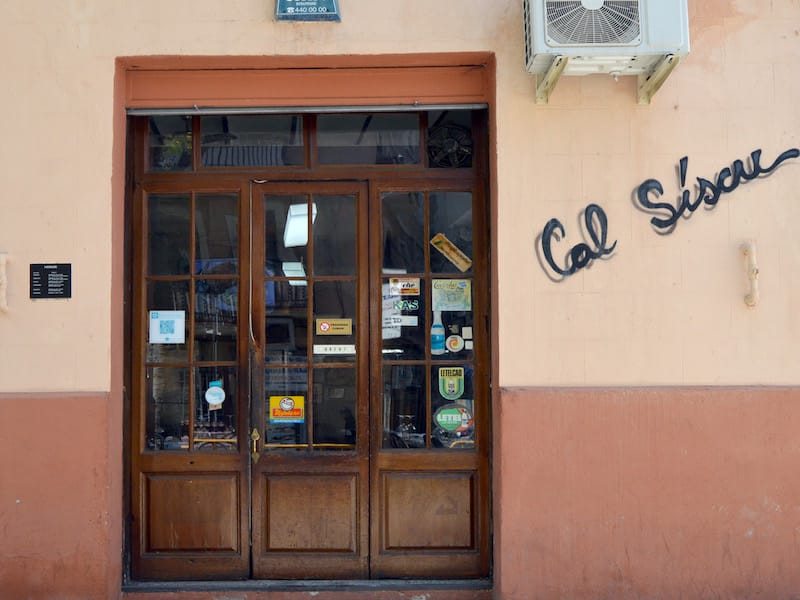
In 2011, the owners had reached retirement age and were looking to sell. So Constantino “Tino” Cabo, who was from the area, decided to take over the bodega-marisquería with his friend and head chef Jaume Carbonell. They improved and extended the menu from 14 to around 25 dishes, including monkfish stew and fritters, fresh local prawns from Palamós, Atlantic barnacles, Galician clams (cooked with a bit of olive oil, some lemon and a bit of pepper), canaíllas (sea snails), Roman-style and Andalucian-style squid, grilled espardeñas (sea cucumbers), and salted xipirones (baby squid), among others.
Nowadays, Cal Siscu’s customers are a mix of Barcelonans who work at the offices and hospitals in the area and stop by for lunch during the workweek, and locals from Hospitalet, many of whom come with families and friends on the weekends. “The first years were complicated, but after a lot of work and increasing the food quality, the restaurant finally took off,” says Tino. The throngs at lunch and dinner attest to that.
Every day the bar’s counter is covered with trays of majestic treasures from the Mediterranean and the Atlantic.
Their salted prawns, juicy and tasty and with just the right salt point, pair perfectly with the aromatic house vermut – as an aperitif, this combination opens the senses to what comes next. For us, that was espardeñas with chickpeas and a creamy fried egg on top that pulls everything together. These sea cucumbers from the Mediterranean are a delicacy and not so easy to find nowadays, although fishermen from Catalonia, Valencia and the Balearic Islands have traditionally caught them – it’s a classic dish with deep roots in the Catalan culinary tradition. The version served at Cal Siscu was immensely satisfying and managed to be both rich and humble.
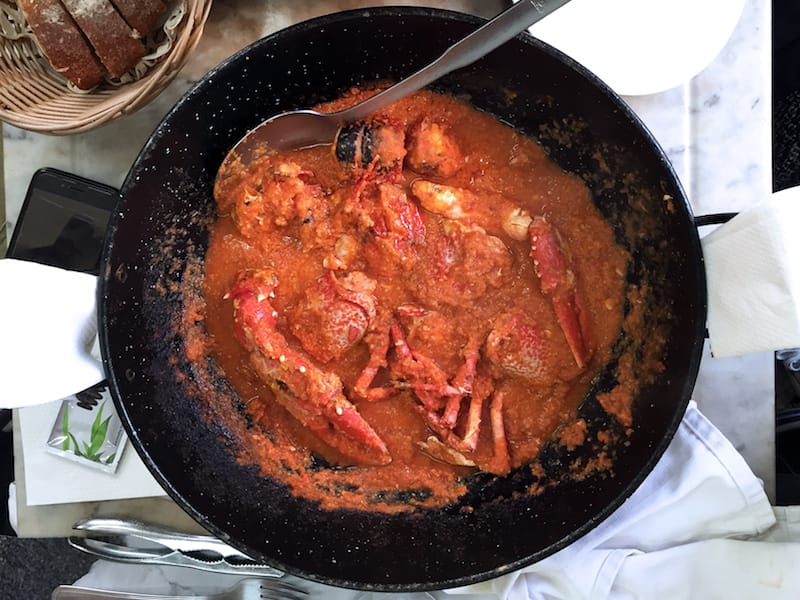
But the true star here is still the lobster with sauce. Tino came to our table with a couple of live lobsters to let us make our pick, which Jaume then cooked in a casserole with a tomato and nut sauce. This dish is very similar to the lobster in “American sauce,” a recipe created by the French chef Pierre Fraise, with a sauce that included tomato, onion, minced garlic, white wine and cognac. Here, they alter the sauce a bit by adding a traditional Catalan picada of finely chopped almonds and hazelnuts plus a couple of aromatic liqueurs (which ones, exactly, are kept secret). As a result, Cal Siscu’s sauce is thicker, a bit sweet and very fragrant. Once we finished the lobster, they added two eggs to the remaining sauce – this simple act encouraged us to devour what was left, and as we dipped our bread in the luxurious red sauce, we found ourselves immensely grateful that the pleasure of eating this dish had been stretched out.
Ironically for a bodega, the current wine selection is restricted to a few options from Torelló, a winery based in Catalonia’s Penedès region. All of their cavas are available, plus a few other bottles with different origins and grapes: for whites, there’s one Verdejo (Rueda), one Godello and one Albariño (both Galician), and for reds, one Montsant (Catalan), one Rioja (Rioja) and one Ribera del Duero (Castilla Leon).
The selection is small but the quality is good, and the wines we tried accentuated the flavors of the seafood without overpowering them. And really, despite its history, the soul of this bodega-marisquería long ago left the vineyard behind, instead heeding the call of the sea.
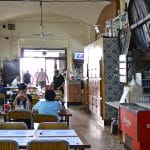 August 2, 2018 Bodega Carlos
August 2, 2018 Bodega Carlos
There we are at Bodega Carlos, enjoying a homey and delicious batch of crispy fried […] Posted in Barcelona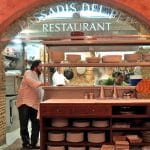 December 25, 2013 El Passadís del Pep
December 25, 2013 El Passadís del Pep
A hidden culinary sanctuary, El Passadís del Pep may be located in one of the most […] Posted in Barcelona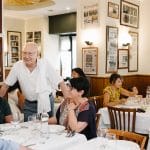 July 19, 2018 Mimì alla Ferrovia
July 19, 2018 Mimì alla Ferrovia
On a recent visit to the market of Sant’Antonio Abate, a pilgrimage site for fresh […] Posted in Naples
Published on May 01, 2018
Related stories
Eat your way through Sants on our culinary walk!
August 2, 2018
BarcelonaThere we are at Bodega Carlos, enjoying a homey and delicious batch of crispy fried anchovies and succulent stewed pork cheeks, when we suddenly hear birdsong. We look up, but neither canary nor nightingale can be seen flying around the high-ceilinged bodega-restaurant. But then the birdsong instantly switches to a sound we can best describe…
December 25, 2013
BarcelonaA hidden culinary sanctuary, El Passadís del Pep may be located in one of the most visited quarters of Barcelona, but it’s out of sight of anyone who isn’t looking for it. Once you go down the long corridor that leads to the restaurant, you don’t need to do anything, and that includes choosing what…
July 19, 2018
NaplesOn a recent visit to the market of Sant’Antonio Abate, a pilgrimage site for fresh produce, we made friends with Salvatore, a young Neapolitan chef who was buying fruit and vegetables for his restaurant. We thought nothing of it until we bumped into him again, this time when he was buying fresh bluefish, the symbol…







































